Languishing land: Santee Sioux members say federal mismanagement is costing them thousands each year
By Destiny Herbers, Flatwater Free Press
Oct. 27, 2024, 11:41 a.m. ·
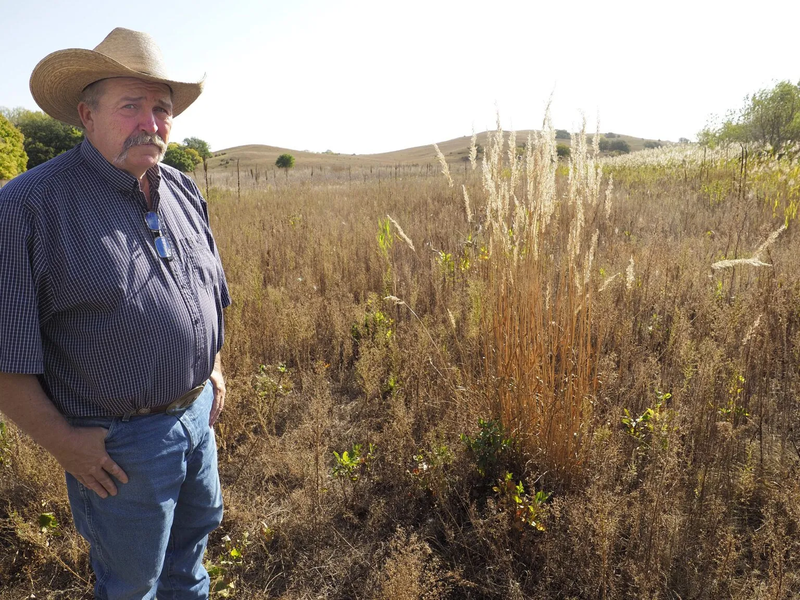
Alonzo Denney sets his phone on the conference table, pulls up a family photo and starts counting.
There are 11 living relatives, including him, now sharing ownership of 80 acres along the Bazile Creek in Knox County, land originally allotted to their ancestor by the federal government.
Denney switches to the calculator app and starts punching in numbers: a rough estimated value of an acre, multiplied by 80, divided by his family members.
He might, he says, be paid around $25,000 if this land, now mostly flooded and unusable, was placed into a flowage easement with the U.S. Army Corps of Engineers.
Denney, chairman of the Santee Sioux Nation, doesn’t control his family’s land. Neither do his relatives. Instead, the U.S. government holds the title and responsibility for maintaining it and managing it for the benefit of its heirs.
But the government’s Bureau of Indian Affairs hasn’t appropriately managed this land – at least 2,000 acres across nine major tracts – for years, tribal leaders and relatives argue.
Some pastures appeared overrun with reeds and willows when a Flatwater Free Press reporter visited in October. Some cornfields are now occupied by rows of invasive cedar trees. And some land, like that owned by Denney’s family, was badly flooded in 2019. But the family hasn’t received federal compensation, though nearby white landowners who control their own land did.
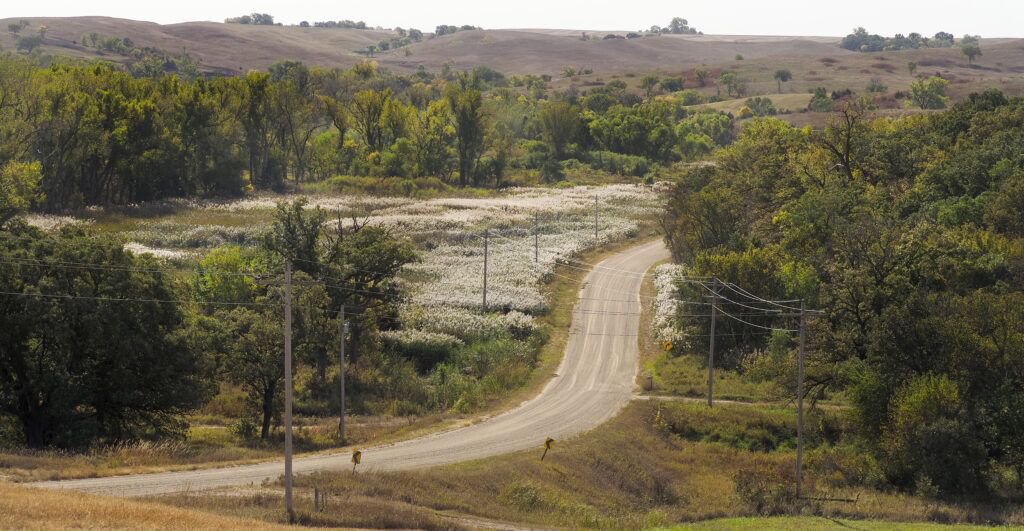
“There’s just thousands being lost to these heirs each year,” said Mike Crosley, the tribe’s land manager, because of the BIA mismanagement.
These tracts are the few remaining pieces of the tribe’s original allotments, land divided and assigned to individual Santee families by the federal government in the 1880s. Over the years, the rest has been lost to back taxes or sold for groceries, Crosley said.
Denney grew up on his family land. As a child, he watched a farmer plant and harvest there. Nobody lives there now. It’s a floodplain.
“It’s time to hold the BIA accountable and have them act in the best interest of our membership, instead of the United States government,” Denney said.
The wet land
The Bazile Creek has been steadily rising, a result of the Missouri River dropping sediment as it slows near Gavins Point Dam. In 2019, heavy rains and snowmelt caused devastating flooding throughout northeast Nebraska, including this creek running through the Santee Sioux reservation.
Five tracts along the creek are allotment land, Crosley said, owned by descendants of the tribe’s original families and managed by the government.
Five years after the floods, much of that allotment land – once productive cropland – is still saturated with water and sand. It’s overrun by invasive wetland grasses nearly as tall as Crosley’s pickup truck. It’s unfarmable.
“Just thinking about my family’s land, you walk down there now and you’ll see piles of sand everywhere,” said Kameron Runnels, the tribe’s vice chairman.
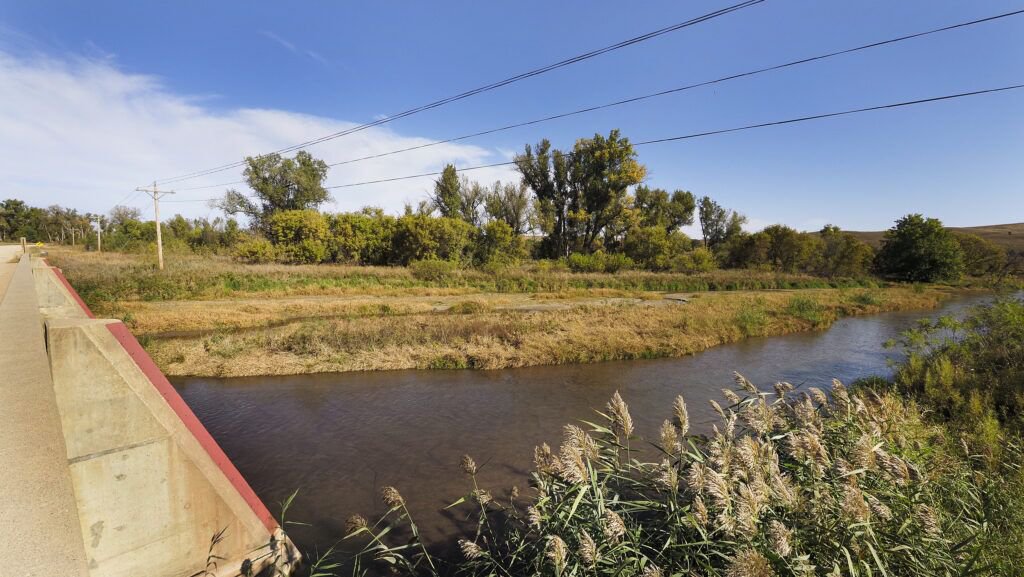
Drew Nyström, a spokesman for Army Corps’ Omaha district, said it acquires flowage easements for flooded land like this, paying the owner the appraised fair market value of the land’s “highest and best use” in exchange for the right to occasionally flood the land.
The Army Corps has done so on the Bazile Creek since 1999, Nyström said, due to rising groundwater and surface water levels.
Non-Native landowners filed for the easements following the 2019 flood and have already been paid, Crosley said. But the BIA hasn’t filed on behalf of the Santee Sioux heirs.
Crosley said he met with Nilah Solomon, the superintendent of the BIA’s Winnebago Agency, which serves the Santee Sioux Nation, to ask if she would file a flowage easement.
“Her answer to me was that one government entity can’t sue another government entity,” Crosley said.
The Army Corps deferred questions about Santee land and other property held in trust to the Bureau of Indian Affairs.
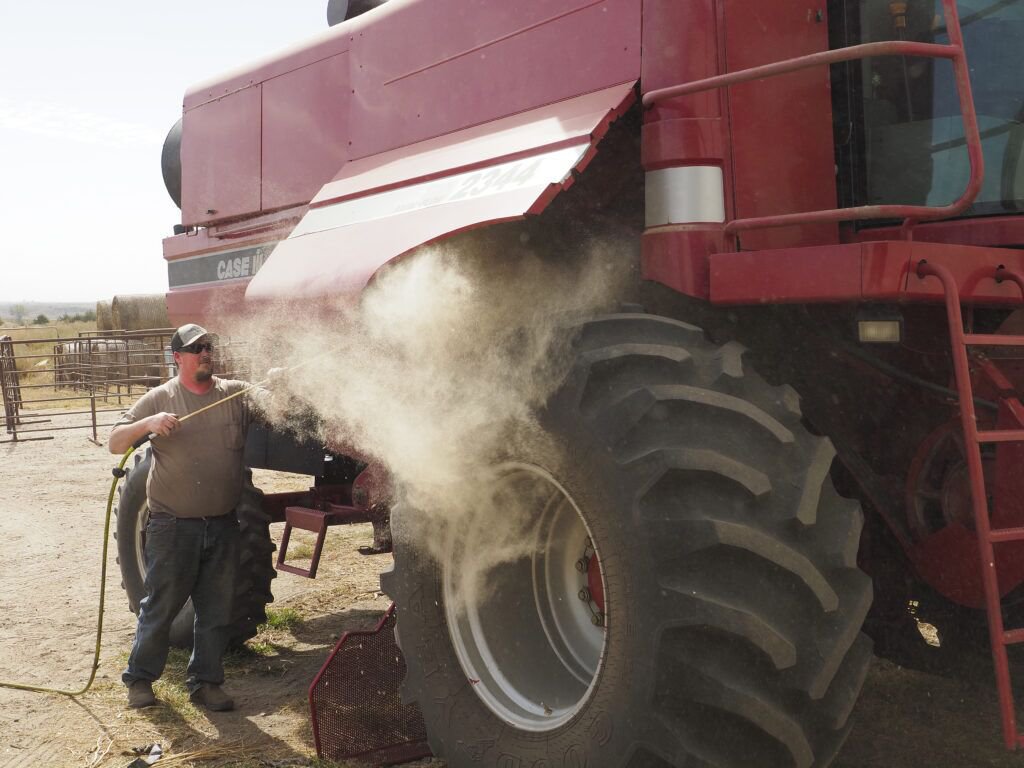
Solomon, the BIA’s point person in northeast Nebraska, declined to speak with the Flatwater Free Press, citing a recent directive that all journalists must go through the BIA’s D.C. office. That office did not respond to multiple emails, calls and voicemail messages.
The U.S. Department of the Interior states it has a legally enforceable fiduciary obligation “to protect Tribal treaty rights, land assets, and other resources in perpetuity” through the BIA and other bureaus.
Leaders of the Santee Sioux Nation said the bureau is not meeting that duty because tribe members haven’t been compensated for the loss in rent and land value after the flooding.
“They’re the keeper of the title of these lands,” Crosley said. “It should be then their responsibility to do their due diligence for those individual owners.”
That compensation could allow some heirs to buy back other reservation land, which some families, and the tribe itself, are interested in doing. The Santee recently bought a 3,000-acre ranch, and Crosley is looking to expand into adjoining land.
The tribe is also leasing some tracts back from the BIA – essentially paying to fix up and farm land that tribal members already own.
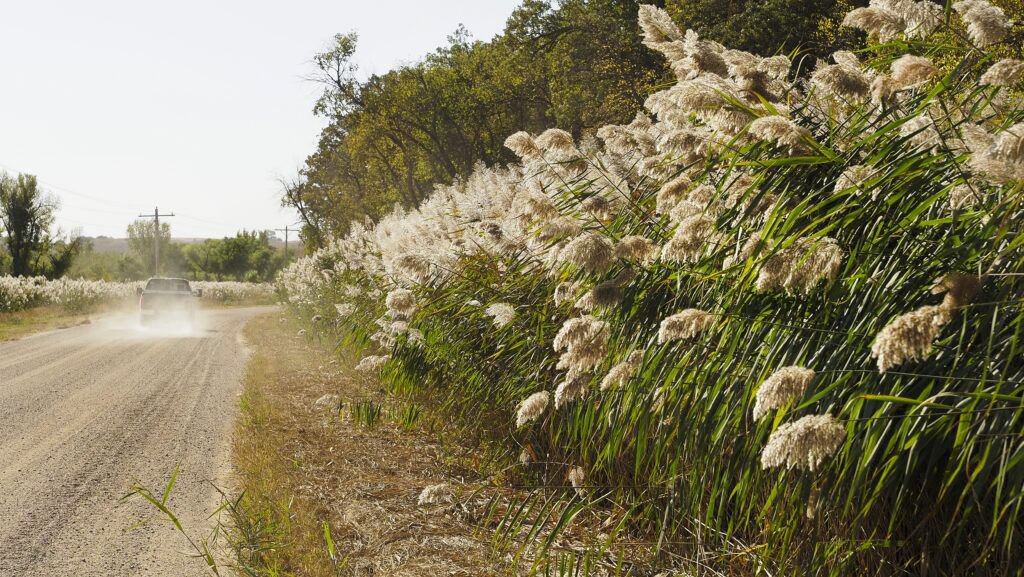
“If the BIA’s not going to manage these, we’re gonna try to manage these,” Crosley said.
Crosley’s team is cleaning out the invasive plants, building new fences and adding water infrastructure, turning it into grazing land for the tribe’s ranching operation.
But that work may not pay off for the Santee. When the tribe’s leases are up, Crosley expects that the bidding to farm the land will grow fiercer because of the improvements the tribe has made. Even if the tribe keeps the lease, Crosley expects the rent price will jump.
“It’s something you gotta do, but it’s gonna sting you in the end,” Denney said.
The dry land
Cedar trees stand in tidy rows, noticeable because they’re sandwiched between two fields of valuable Knox County cropland. They’re leftovers from a 15-year government forestry program.
The BIA enrolled four tracts in the forestry program on behalf of the heirs, Crosley said, but since it ended a decade ago, those tracts have sat idle, and the Santee owners haven’t collected any payments.
The bureau could’ve re-enrolled the land in the program, Crosley said, but first it needed to remove linings around the trees and clear some invasive plants to keep it eligible. The bureau didn’t, he said, and the trees — locusts and cedars now considered a serious threat to Nebraska’s rangeland — kept growing unchecked.
They’ve spread, forcing neighboring farmers to bear the expense of cleaning cedar seedlings from their fields.
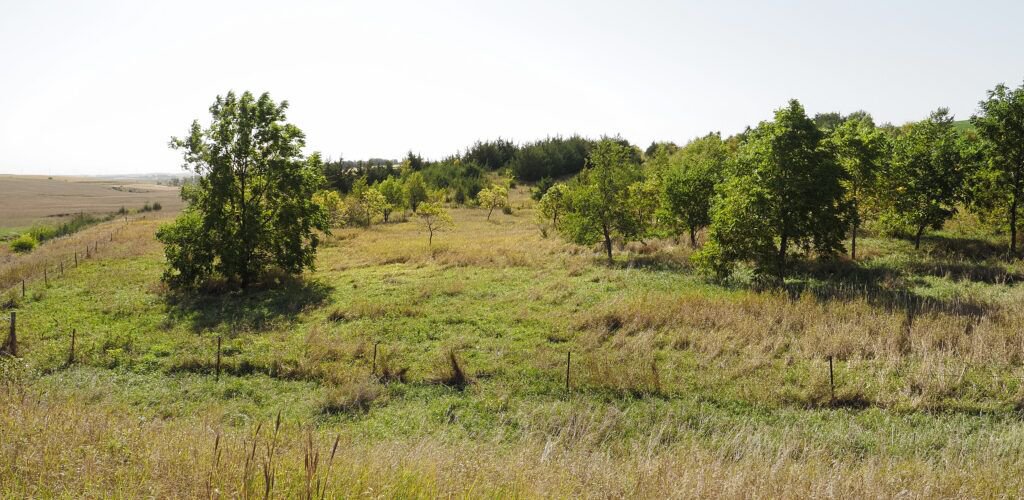
Those seedlings are also a fire hazard, Crosley said. The tribe is working with the U.S. Department of Agriculture to clear cedar trees and lessen wildfire risk elsewhere. But the Santee can’t clear land under BIA management without that agency’s cooperation, Crosley said.
There’s legal precedent suggesting that the government can be held responsible for trust land it mismanages.
In 2003, the U.S. Supreme Court ruled with the White Mountain Apache tribe that the government had a duty to preserve trust land it had occupied, and was liable for breaching that duty, said Matthew Campbell, deputy director of the Native American Rights Fund.
The U.S. has since faced other lawsuits related to the trust system, said Campbell, and settled with dozens of tribes.
“I think the claims end up being very strong, and because of that, I think the United States tends to see the writing on the wall and enters into settlement discussions,” Campbell said.
Most notably, the government settled class-action lawsuit Cobell v. Salazar and established a decade-long effort to reduce fractional interests – land ownership split between multiple members of a tribe. Most tribes’ goal: Use the government money to buy out at least half of the individual owners on a plot, giving the tribes majority stake in management decisions.
Some 420 allotment owners on the Santee Sioux reservation sold their shares to the tribe under that buy-back program, greatly reducing the number of individual owners.
But many heirs also chose not to sell.
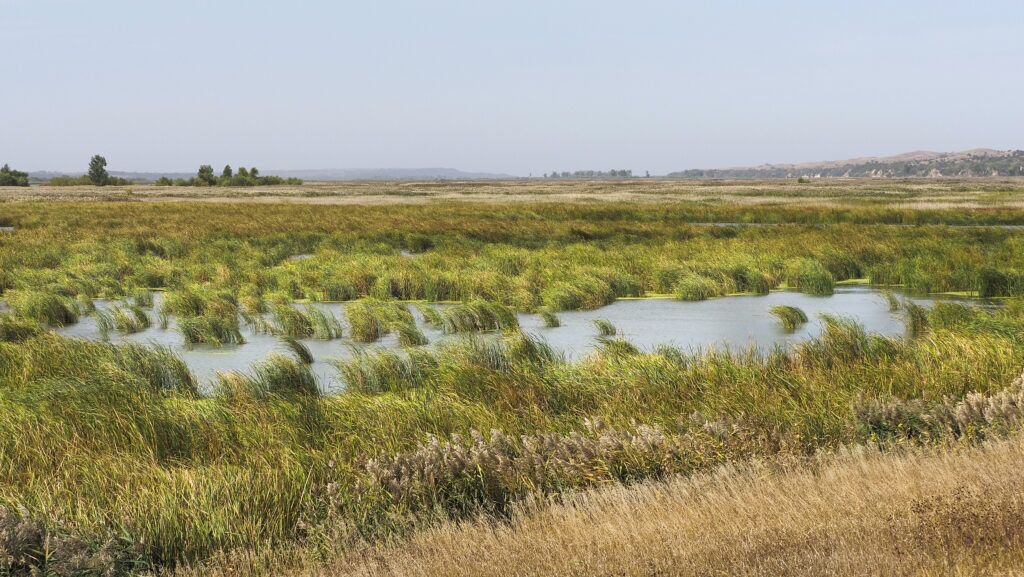
Runnels said his dad kept his share because he had good memories of the old property, where his great grandmother once lived and where he fished in the creek as a child.
The number of family heirs who own the remaining tracts of land varies widely on the reservation. One tract only had two heirs the last time Crosley checked. Another once had 251 distant relatives who all shared ownership, Crosley said.
Consider, he said, getting all 251 to agree to change something about that land’s management. “It would be a nightmare,” he said.
This kind of fractionated ownership is an issue for Native communities across the country. It’s a direct result of the Dawes Act, which split reservation land into individual plots. But when the original allottee died, title ownership to the land was divided evenly among heirs, though the physical land itself wasn’t divided.
With each generation the number of owners grows exponentially, a problem often exacerbated because many tribal members don’t have wills, Crosley said.
Crosley has 100% ownership of his own family land, which he manages and farms, but it’s in trust too. It’s likely that the BIA will become responsible for managing his land on behalf of his daughters when he dies.
“You think I want my land to look like some of these other lands?” Crosley said.
The Flatwater Free Press is Nebraska’s first independent, nonprofit newsroom focused on investigations and feature stories that matter.